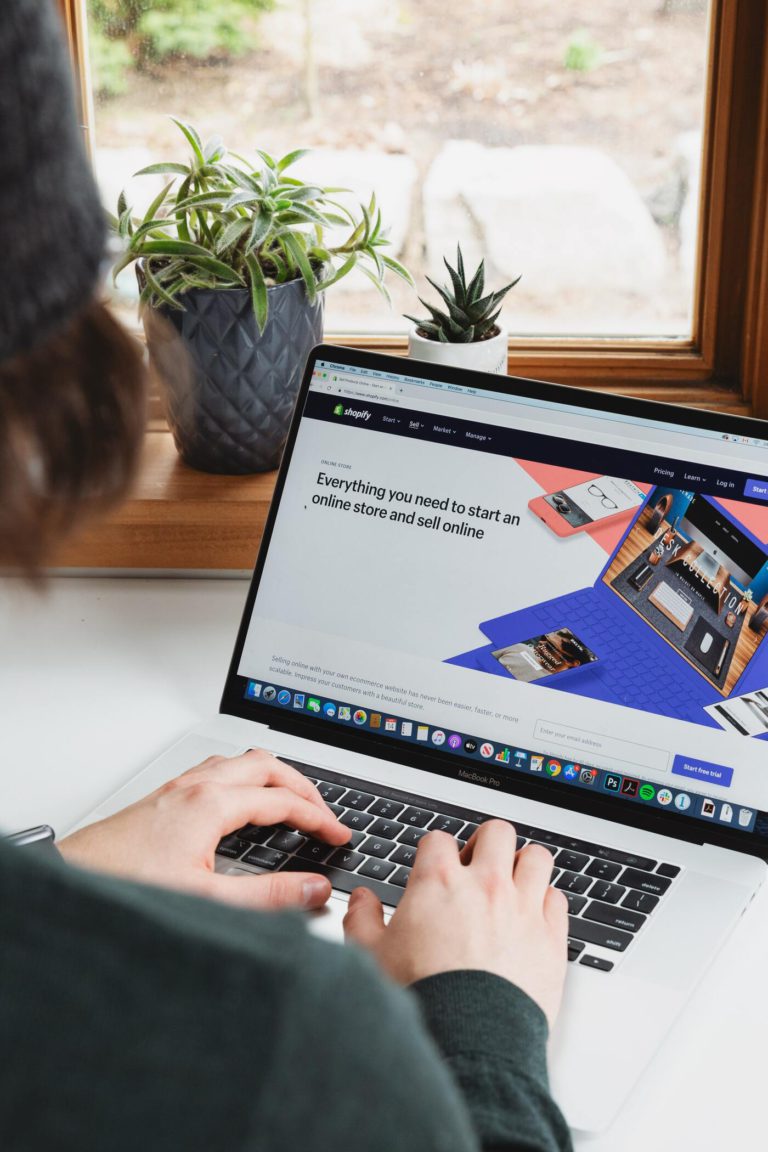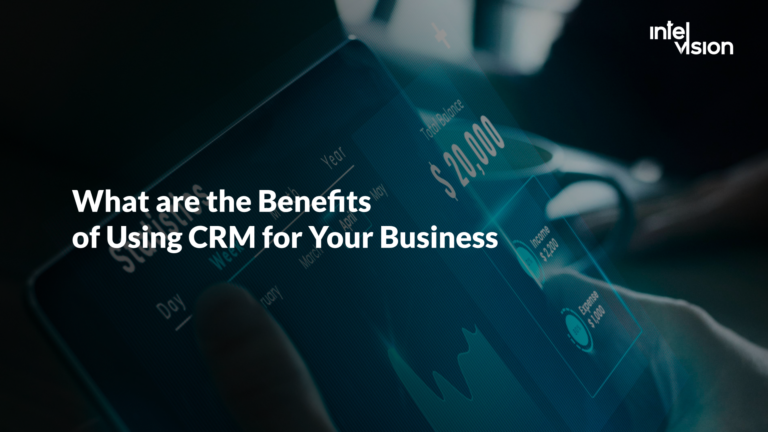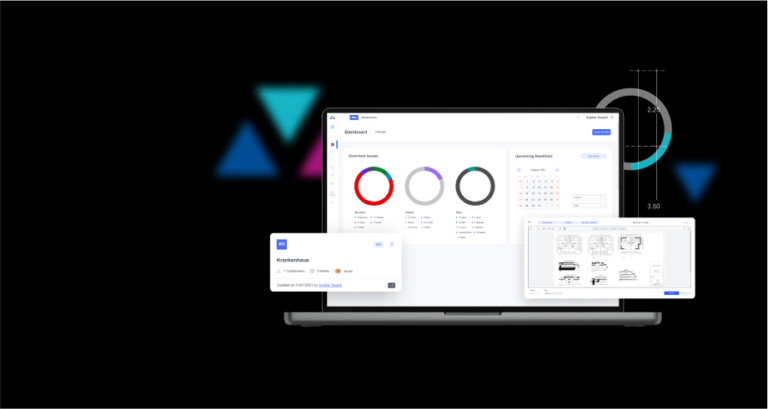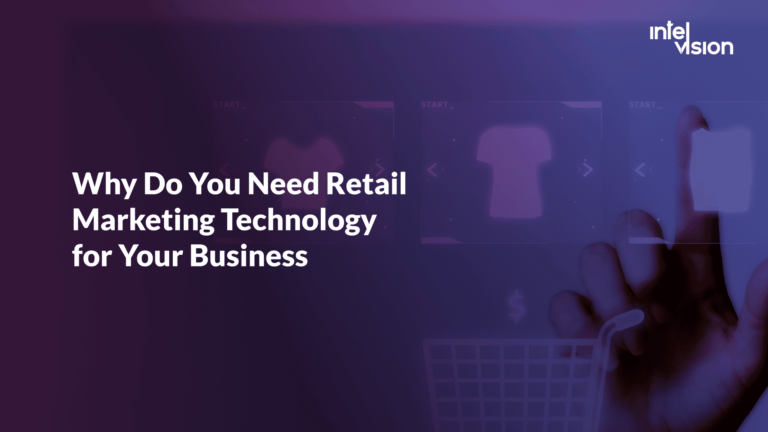
Why Do You Need Retail Marketing Technology for Your Business
Despite the global pandemic COVID-19, social distancing, and “retail apocalypse” we have been hearing about for the last couple of years, the truth is that the retail industry isn’t going anywhere. By 2024, experts predict that 72% of US retail sales will still occur in brick-and-mortar stores.
Meanwhile, we are in a world of constant digital transformation. Shoppers are becoming less hands-on and more tech-enabled. For digital customers like Millennials and Gen Zers, who make up 43% and 40% of today’s shoppers, vibrant retail experience, interactive brand engagement, and innovation are important. Therefore, large companies are experimenting with retail technology trends.
Upgrade your retail marketing technology stack with the key trends which are actively used in the US and Chinese retail industry.
What is Retail Marketing Technology and Why do Retailers Need Marketing Technology for Their Business
Retail marketing technology refers to the digital tools and innovations utilized by brick-and-mortar retailers and e-commerce platforms in their marketing operations. Making technology for retailers a bigger part of your brick-and-mortar store is an intimidating idea for many store business owners. Let’s take a look at technological advancements, and why it is worth the investment.
Streamline marketing store operations
The quicker you can complete mundane marketing tasks, the more time you have to spend on higher-impact activities (or those that can’t be digitalized/non automated technology).
Personalize your marketing activities
Personalization is now a basic consumer expectation. This confirms the Forbes research:
- 71% of online shoppers feel frustrated when shopping is “impersonal”.
- 70% of millennials react negatively to inappropriate emails.
- 74% of customers lose interest in websites or mobile apps with non-responsive content.
Monetate and Salesforce (2018) report results show that the more a marketer invests in personalization, the higher the company’s profit.
Most companies already know how to target at the profile level of the target audience. At the very least, companies use retargeting tools to personalize emails. For example, they can offer a customer a discount on a group of products that he was interested in. The next step is personalized marketing through advanced analytics.
Gather valuable data
New retail technology is powered by customer data. It creates opportunities to collect information about your customer base. QR codes, for example, are a relatively simple way to collect information about shoppers. When customers scan a coupon QR code on their smartphone, they’re taken directly to your newsletter subscription page. You get their email address, and the customer gets a coupon to redeem in-store. It’s a win-win for everyone involved.
Encourage the target audience to visit your physical store
Overall, almost 6 in 10 consumers would prefer to shop in-store with retail store technologies to make the shopping experience more fun and engaging.
What else?
By choosing the right marketing technology in retail stores, retail businesses can improve:
- Their brand image, thanks to social media management tools that post the right content at the right time.
- Trust in their brand, thanks to UGC displays that add social proof right onto the retailer’s store.
- Customer relationships, thanks to CRM and customer service tools that help keep customers happy.
- Their reach, thanks to the powerful tool that improves website SEO.
- Their conversions and service, thanks to useful chatbots or product review displays.
Retail Marketing Technology Trends For 2022
On the cashier-less store Amazon Go network, a person doesn’t need to scan products. The buyer logs in to the mobile app at the entrance, brings a smartphone with a QR code to the turnstile and goes to the store.
The entire ceiling of the supermarket is covered with Artificial intelligence cameras, and the shelves are equipped with special sensors that monitor leftovers. If a person changes his mind about taking something, it is enough to put the product back—and it’ll automatically disappear from the online shopping cart. Contactless payment is debited from the bank card as soon as the buyer leaves the store. It’s that simple.
What other retail marketing technology can be used in online and offline retail stores to increase purchases, and awareness of your company and provide insights from the marketing campaign?
Augmented Reality (AR)
The augmented reality shopping experience is becoming the new norm in 2022. With virtual fitting rooms, enhanced in-store AR technology navigation, and other AR experiences spreading across the market, those without these features are falling behind. This is one of the key technological advancements bridging the gap between digital eCommerce storefronts and brick-and-mortar shopping.
On the opening day of a new store in a suburb of Dallas, a furniture manufacturer IKEA invited customers to immerse themselves in the virtual world of their products. Thanks to augmented reality marketing technology in the IKEA app, users could see how furniture and decor items will look in their homes. All they had to do was point their iPhone camera at items. Nearly 300 people test-drive IKEA VR, average participation time is three to five minutes.
Virtual reality (VR)
Virtual showrooms will change the usual look at offline shopping. Imagine an empty room that becomes a free digital space thanks to VR equipment. The client enters it and puts on virtual reality glasses to check out the range of available products.
South Korean car manufacturer Kia has already implemented this feature in its store. Customers can “walk” through the virtual showroom with cars and choose the model they like. Kia also gives buyers the opportunity to test their “dream car” on a virtual track.
Companies are also actively introducing smart VR mirrors in boutiques and accessories stores. This mirror allows customers to “try on” an outfit or piece of jewelry without even wearing it. By selecting clothes on the touch screen, you can see how well they fit you, and use AR filters to change the color or model. Such a mirror is used by the Japanese clothing retail chain Uniqlo, and the AR filters are used by the cosmetic brand Sephora.
Big data & Artificial intelligence (AI)
Retailers have accumulated a huge amount of customer data. But only leaders can work with Big Data in retail. Automation will help bring retail chains to a new level. The main thing is to catch this trend and start changing now.
For example, Netflix collects information about users’ viewing and preferences. Based on them, the streaming platform provides personalized recommendations and determines which shows have “dropped in”. And the online lingerie retailer True & Co has developed an algorithm that helps to choose a comfortable bra. The company launched a quiz for women. The analysis of the received answers helped True & Co identify six thousand body types and find out what women pay attention to when choosing underwear.
Video games
To promote the new “Epic React” shoe, Nike China paired an in-store test fitting with a 3-minute video game. Clients had to create an avatar that copied their movements during the test. They were also offered to run in new sneakers, exploring several worlds in a game format: a floating metropolis in China, panda island, and Mount Fuji. The 2D video game “Reactland” was available to shoppers at Nike physical stores in Shanghai, Beijing, Guangzhou, and Chengdu for a month. 48% of consumers who played it bought their Epic React pair.
Voice shopping
Walmart partnered with Google to launch a voice-ordering feature in 2017. It is available to Google Assistant platform users. The function is supported by Google Home, smartwatches, and Android/iOS smartphones in the regions where the supermarket chain operates. The user can tell a shopping list to Google Assistant while working, driving a car, or preparing breakfast.
Walmart employees will place the order and deliver it at the agreed time. And if the client asks to re-order some product, the virtual assistant will find it in the purchase history and copy the delivery detailed info. To activate the function, the user needs to say: Hey Google, talk to Walmart.
Why is that important? According to a study by the American fintech company Blackhawk Network, 76% of buyers cite ease of ordering goods and payment as one of the reasons for their brand loyalty.
Automated customer support
Business is moving towards excluding the person from the customer support system. One of the clearest examples is the AI-based virtual smart assistants of the New Zealand company Soul Machines. Virtual support employees are capable of empathy, so they can determine the wishes and moods of customers by their emotions. Thanks to this, 40% of conversations end positively without the participation of a person from the company. New technology for retail stores learns with each contact, so the success rate is expected to increase.
NFTs & metaverse
Non-fungible tokens (NFTs) are unique, digital pieces of content—such as images, videos, tweets, and audio—owned by one person. Information about the token is stored on a secure and decentralized data record known as a blockchain. One of the key benefits of NFT is the fact that digital objects cannot be stolen, faked, or deleted. For example, in the case of games, a person buys the opportunity to use a weapon, but developers or copyright holders can withdraw it at any time without explanation or compensation.
According to MarketsandMarkets forecasts, the NFT market will grow from $3 billion to $13.6 billion by 2027. Many large companies have already announced the use of NFT: from Nike, Adidas, Gucci to IT giants TikTok, Microsoft, Alibaba, and Meta.
For example, Interim Chief Executive Officer of Starbucks Howard Schultz announced the company plans to launch a signature NFT collection before the end of 2022. Token buyers will receive invitations to private events at Starbucks Reserve Roastery premium coffee shops and will even be able to visit the Starbucks Hacienda Alsacia 240-hectare coffee farm in Costa Rica that serves as a global Research and Development facility and working farm for Starbucks. Those NFT tokens can be earned (for example, the customer can buy a certain number of items from the menu, and confirm purchases by a barcode from the app), or purchased using a credit card.
Custom Retail Marketing Software for your Business
From AI-backed predictive analytics to automated customer service, custom retail software development has the potential to help you grow your business at any stage. Build a custom MarTech solution from scratch or improve your existing product in the retail industry! Intelvision engineers are here to help with custom new technology in the retail industry or with extending the functionality of your existing solution.
Finally, we have approached the case we were longing to share with you. Intelvision is proud to share the Kiflo project, which we have created and are proud of. Kiflo helps SMBs drive sales growth with Partnerships. With its help, you can build an affiliate partner program, grow your referral partner program, develop your reseller partner program, structure, automate and scale, cultivate strong relationships with your partners, and maximize performance and power revenue.
We have provided PRM system team extension services for the SaaS company. Kiflo already had a PRM system developed, although they wanted to surpass their astonishing qualification in a short term.
The company faced such challenges:
- a tight time frame;
- scaling;
- qualified human resource shortage.
The solution we’ve worked on is based on .NET, React, Azure, and Typescript with the usage of CRUD approach, Workflow feature development, which allows users to build custom scenarios. Our team has developed a few extra features, to make an already good product even better.
What did we provide our customer with:
Wide Range of Specialists
Developers with different backgrounds, match not only technical needs, but also share similar vibes and to be able to align the pace.
Expertise
CRUD solution may sound easy to deploy, although it takes some time and experience to make it right, especially while working with a high-load PRM system.
CRUD Implementation
CRUD (Create, Read, Update, Delete) is an acronym for ways one can operate on stored data. It allows proper data flow if made properly. It allows the system to smoothly operate the data, without any delays and errors.
As a result, adding extra team members to the existing team allowed our client to increase the development speed, and decrease general time-to-market. And since PRM systems are a large data storage, which makes it crucially dependent on response speed. Proper CRUD structure allowed the ~40% speed increase rate.
Get the Right Retail Marketing Tools in Your Store
The bottom line: retail technology is changing the way people shop in-store. A 2022 Forrester/Shopify study showed that 31% of brands say they plan on establishing or expanding their physical retail footprint in the next year. Your retail space needs to meet customers’ needs if you are to stay competitive. With new technology for retail stores and better opportunities for omnichannel experiences, retail is strengthening.
There is no better time to start investing in retail technology than now. If you are not sure where to begin, get a quote for your new technology in retail.









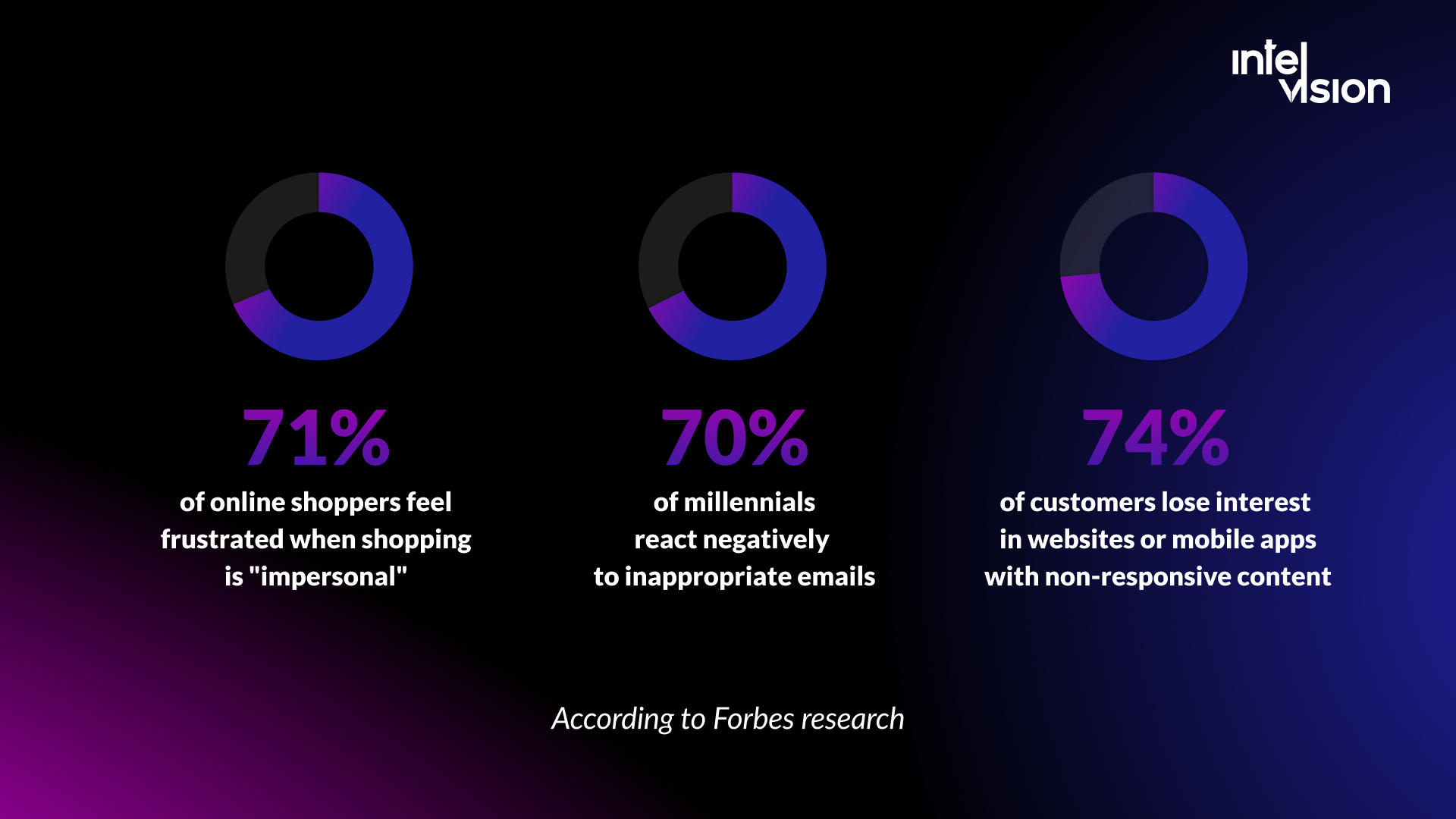
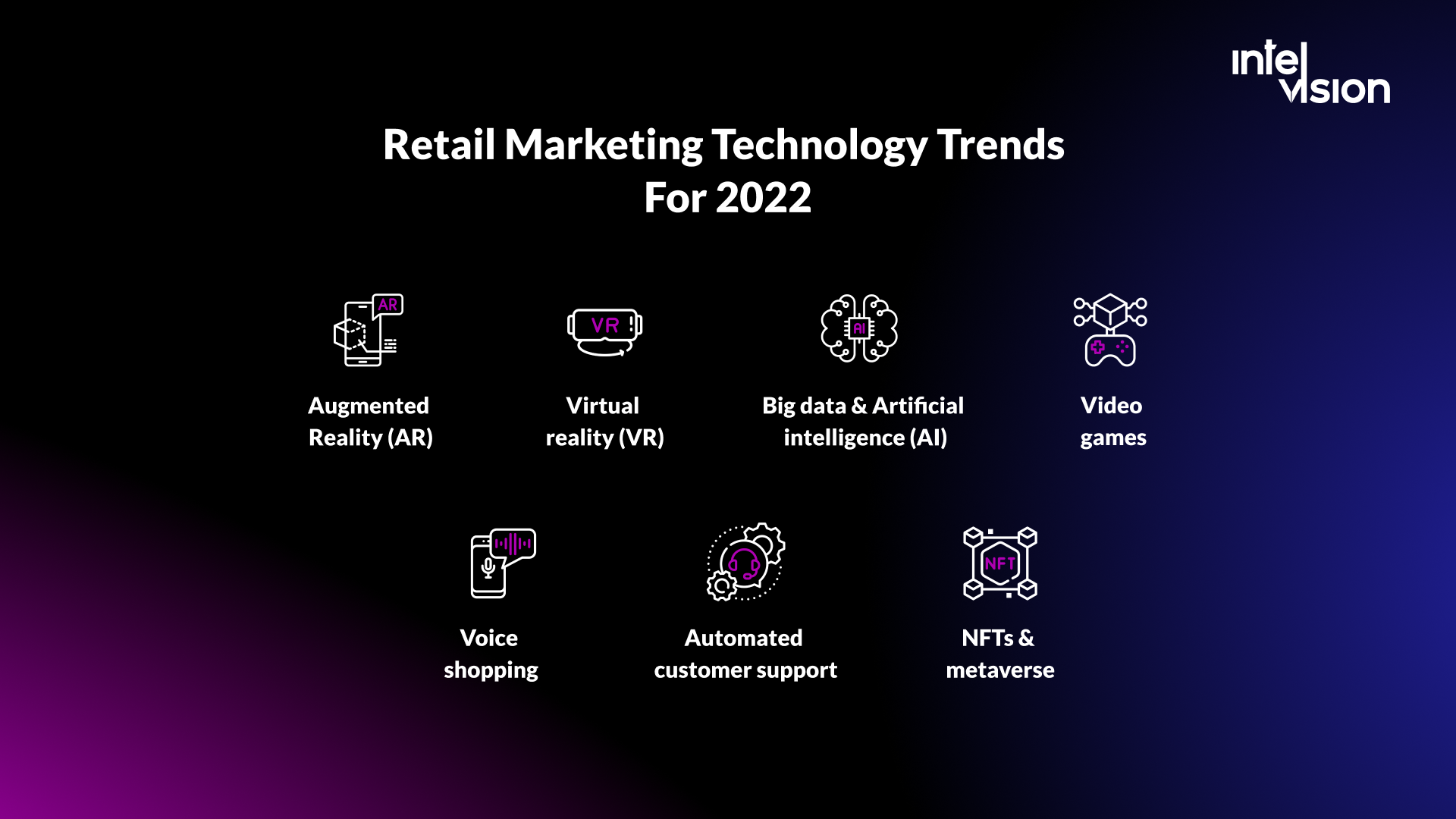
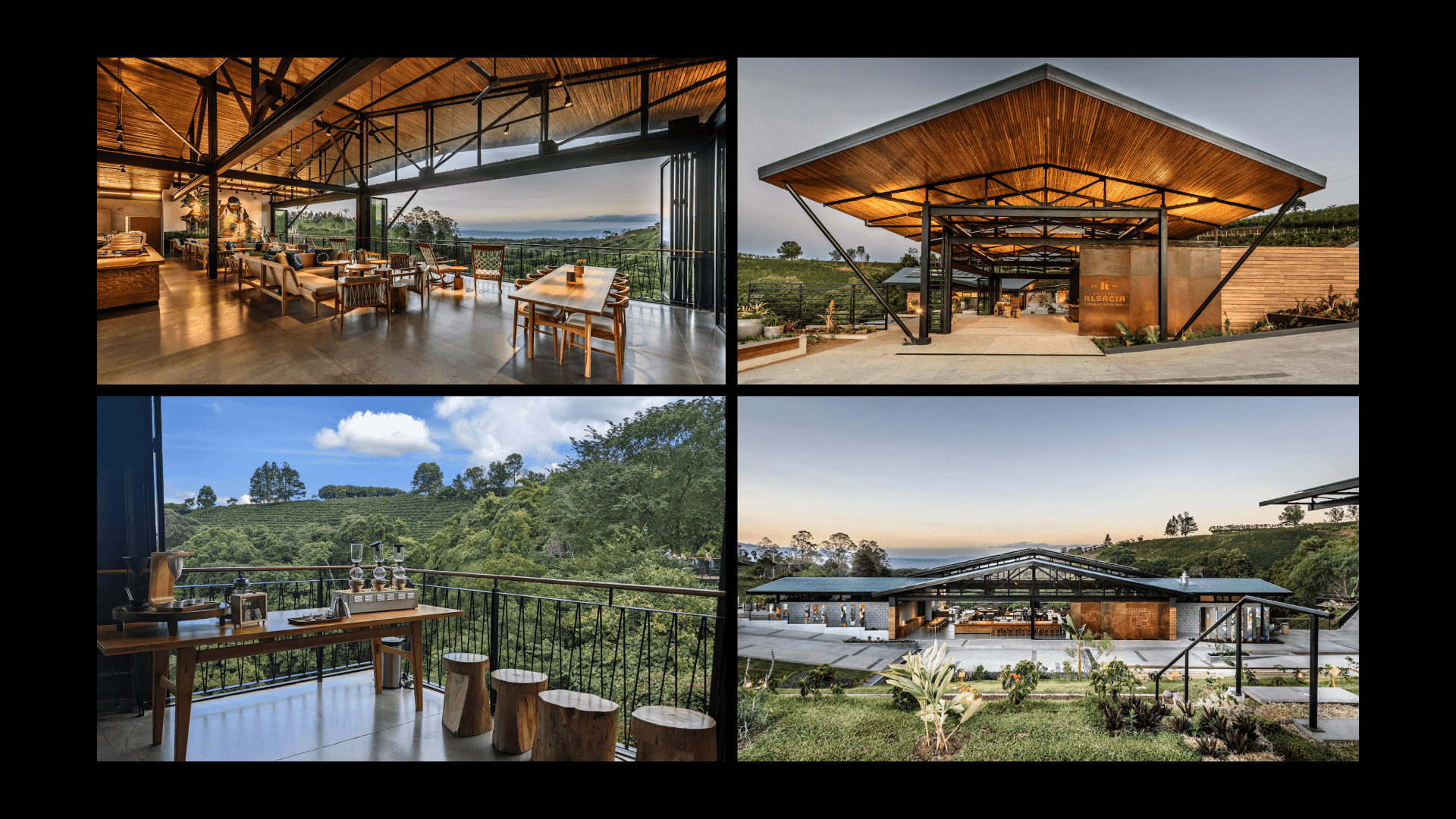
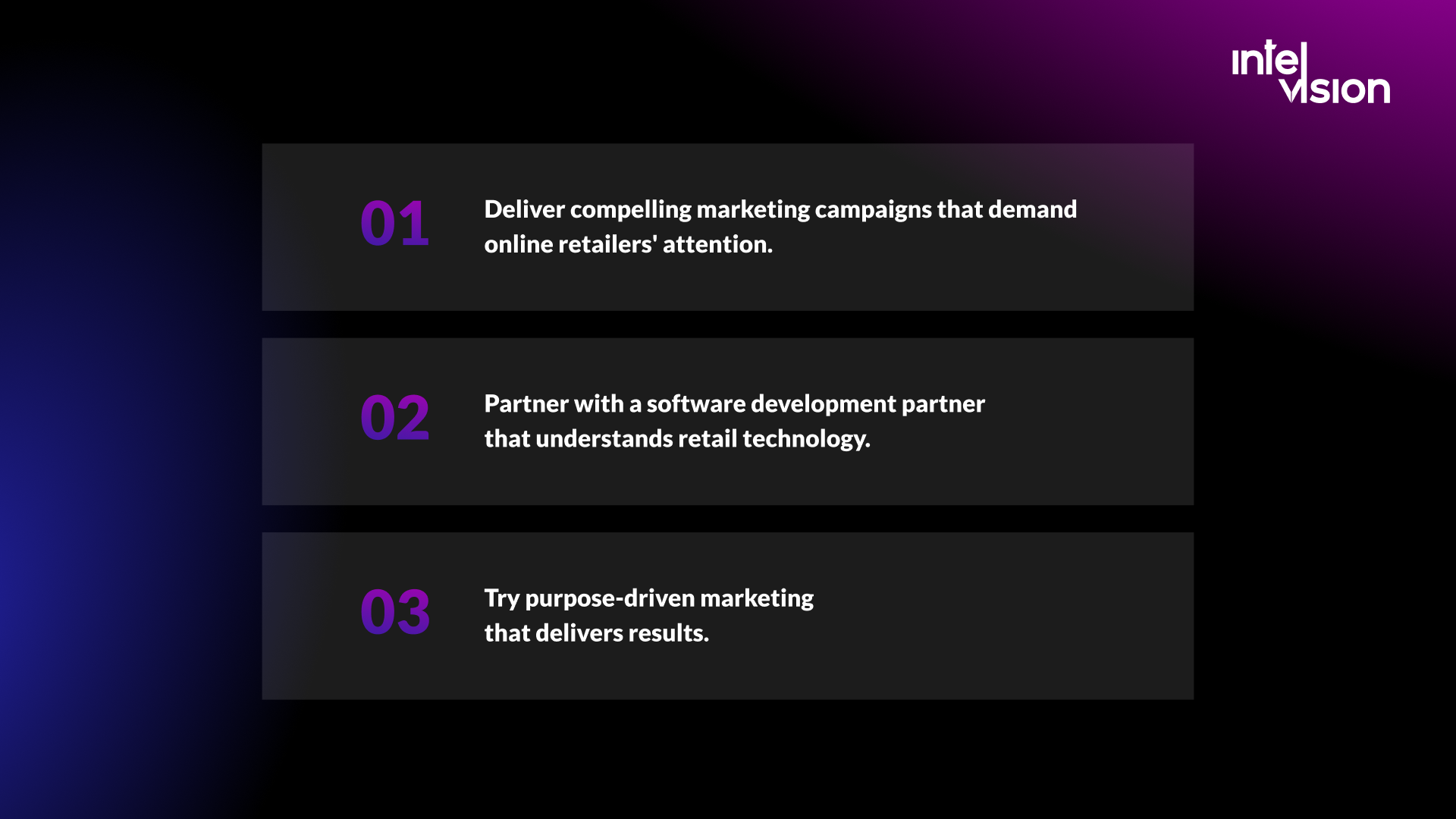

![$portfolio_img_mobile['title'] $portfolio_img_mobile['alt']](https://intelvision.pro/wp-content/uploads/2021/08/Gifit-project-cover-website-development-262x350.png)

